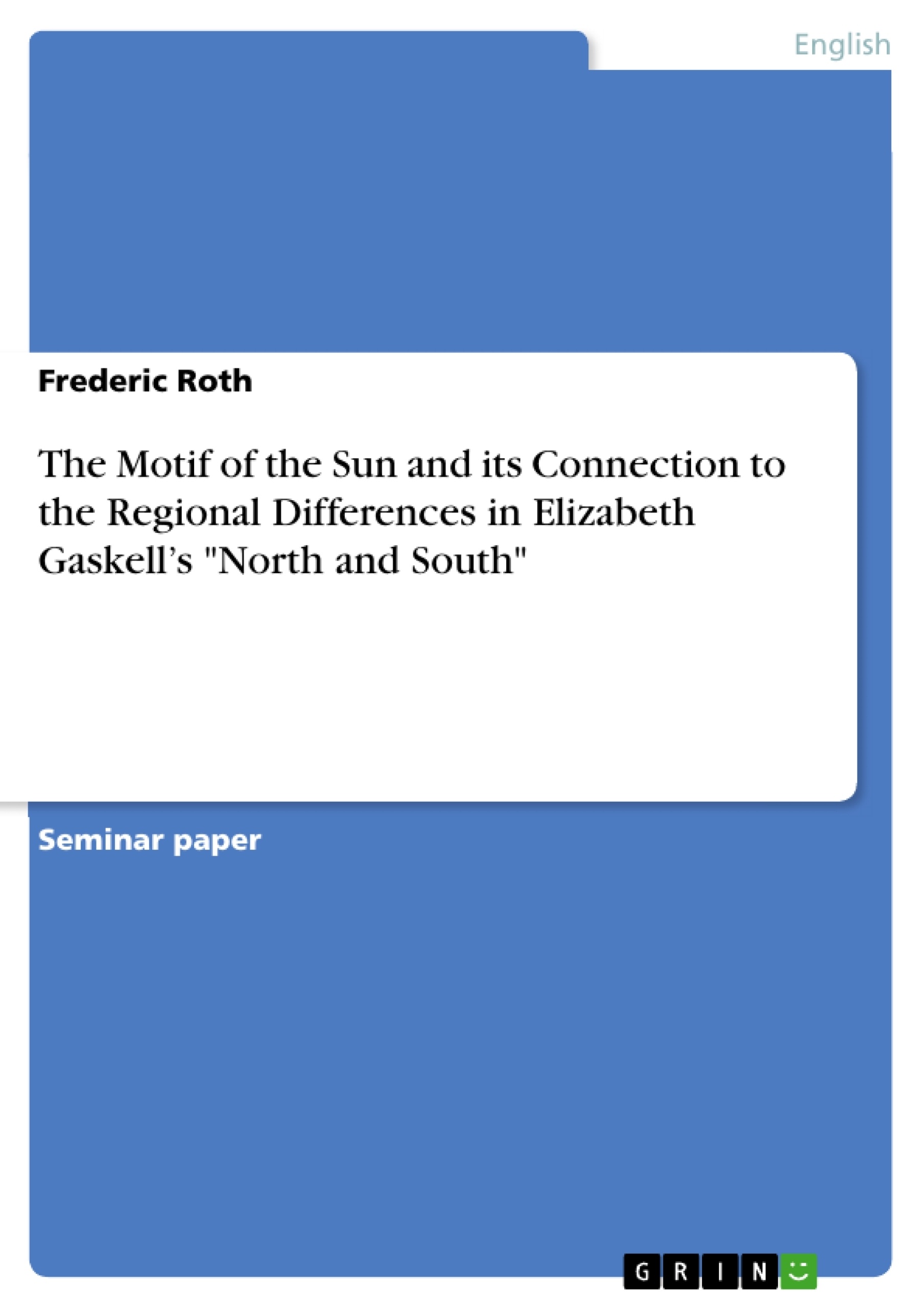This term paper aims to analyse and interpret the motif of the sun in Elizabeth Gaskell’s North and South with a highly text-oriented approach. Several literary researchers have already mentioned the significance of this motif in various parts of the novel. They have also observed that the repeated references to the sun play a large part in emphasising Margaret Hale’s perception of the central dynamic between England’s industrial North and its pastoral South during the nineteenth century. This, along with several stylistically remarkable repetitions of this motif in different instances in the novel, suggests that the interpretation of these repetitions may be of value to further the literary understanding of North and South.
However, none of the previous researchers has yet fully explored whether the implementation of this motif throughout North and South might offer more interpretative potential about the novel’s distinction between the two opposing regions in England. Another objection along these lines comes from Shelston who states that the displayed regional disparity in the novel is “not just about the simple geographical opposition“, but also about the “whole political culture of England“. This implies that the distinction between England’s North and South, and thereby the implementation of the motif of the sun, may be heavily intertwined with the novel’s more favourable perspective on the emergence of a capitalist society in the nation as a whole. Thus, the research question will address the following problem: How does the motif of the sun reflect Margaret’s changing perception of England’s regional disparity and what conclusions can be drawn from this concerning the author’s depiction of the emerging capitalist society in England?
Inhaltsverzeichnis (Table of Contents)
- Introduction
- Definition of Lexical and Stylistic Analysis
- The Analysis of the Motif of the Sun
- Margaret's Adoration for Helstone and Allusions to Upcoming Changes
- The Ambiguity of Margaret's Perception of Milton
- Idealising Helstone and Condemning Milton's Industrialism
- Recognising Milton's Favourable Sides
- Margaret's Melancholic Return to Helstone and Her Embrace of Change
- Implications for the Novel's Depiction of Capitalism
- Conclusion
Zielsetzung und Themenschwerpunkte (Objectives and Key Themes)
This term paper aims to analyze the motif of the sun in Elizabeth Gaskell's *North and South*, drawing on a text-oriented approach. The paper investigates the motif's role in highlighting Margaret Hale's evolving perception of the industrial North and pastoral South of England during the 19th century. The analysis explores how the motif's repeated use throughout the novel reveals the author's perspective on the regional differences in England and the burgeoning capitalist society.
- The motif of the sun as a reflection of Margaret's evolving perceptions of England's North and South.
- The connection between the motif and Margaret's changing attitudes towards industrialism and rural life.
- The implications of the motif for understanding the novel's representation of capitalism and its impact on society.
- The role of lexical analysis in revealing the nuances and layers of meaning within the motif.
- The interplay between the motif's textual significance and its historical context.
Zusammenfassung der Kapitel (Chapter Summaries)
The first chapter provides an introduction to the research question and the methodology employed. It outlines the importance of the sun motif in understanding Margaret Hale's shifting perceptions of England's regional disparity and the novel's portrayal of emerging capitalism. The second chapter delves into the theoretical framework for lexical and stylistic analysis, defining key concepts like 'motif' and 'lexis' and explaining their relevance for the analysis. Chapter 3 provides a detailed analysis of the motif of the sun, exploring its different connotations as it relates to Margaret's views of both her family home, Helstone, and Milton's industrial society. Chapter 4, based on the identified connotations of the motif, draws broader conclusions about the novel's representation of regional differences and the overall depiction of capitalism.
Schlüsselwörter (Keywords)
The main keywords and focus topics of this paper include: Elizabeth Gaskell, *North and South*, motif of the sun, lexical stylistics, literary analysis, regional disparity, capitalism, industrialism, pastoralism, Margaret Hale, textual analysis, historical context.
- Arbeit zitieren
- Frederic Roth (Autor:in), 2018, The Motif of the Sun and its Connection to the Regional Differences in Elizabeth Gaskell’s "North and South", München, GRIN Verlag, https://www.grin.com/document/428239



